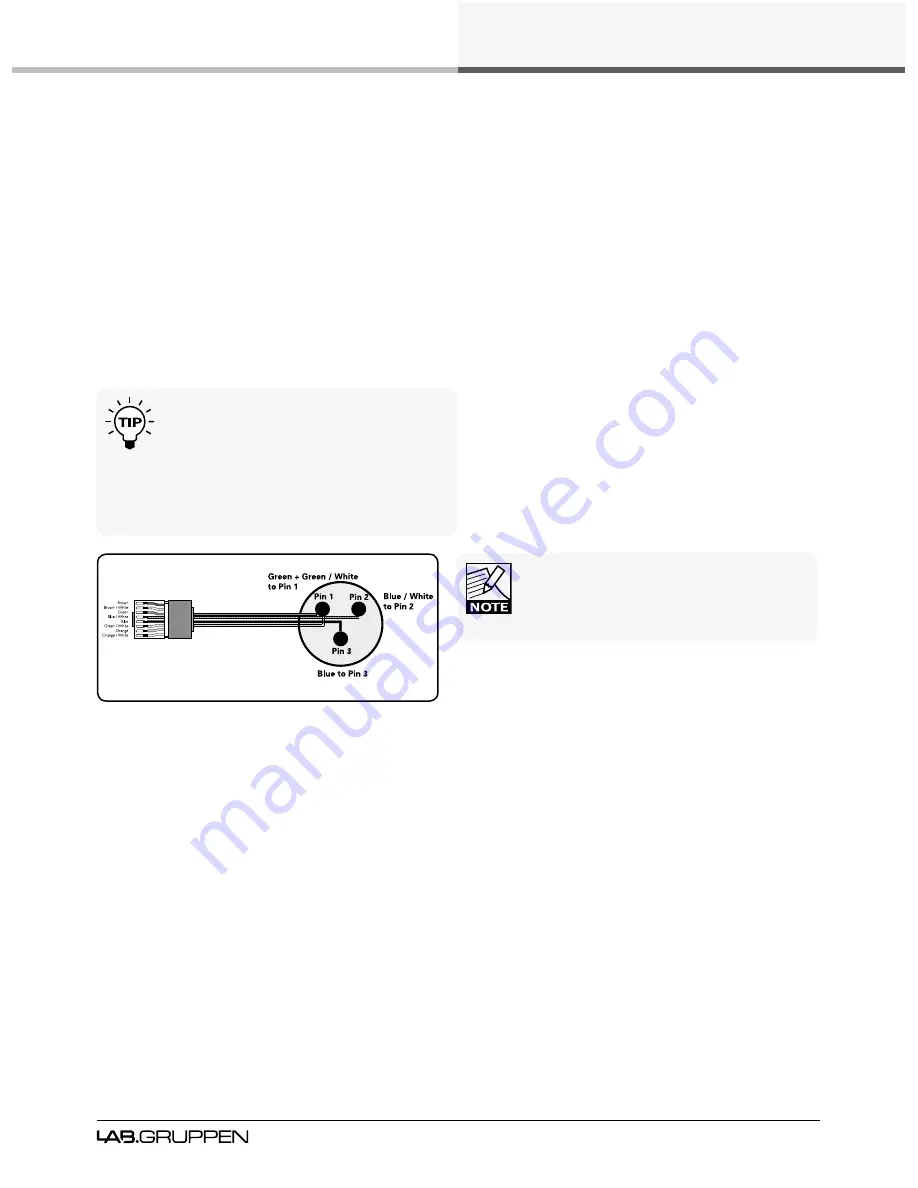
5. Operation and Performance
24
C Series C 88:4, C 68:4, C 48:4, C 28:4 and C 16:4 Operation Manual rev 2.2.3
The amplifier does not have a stand-by power supply for the network. The network is solely powered from the
NLB 60E. Should an amplifier fail or be inadvertently disconnected from the mains, network integrity is fully
maintained and all amplifiers remain visible on the system.
5.7.2 Connection and setup
The NomadLink network requires use of an NLB 60E NomadLink Bridge & Network Controller. The NomadLink
network is established by connecting the NLB 60E OUT port to the first amplifier’s IN port. Then a daisy-chain
is established by connecting the first amplifier’s OUT port to the next amplifier’s IN port, and so on. If a closed
loop network is desired for improved redundancy (highly recommended), the last amplifier’s OUT port must be
connected to the NLB 60E’s IN port.
For all connections, straight Cat-5 RJ45-equipped Ethernet cables should be used.
Optimal NomadLink performance can only be assured when
using Cat-5 cables. However, as NomadLink is only using
two wires plus ground for communication and phantom
power it is possible to create converters from RJ45 to, for
example, XLR connectors using 2-wire shielded cable. The
NomadLink network can then be operated using a standard tie-line in a
multicore signal distribution system. See the drawing opposite for an
example of how to create a converter.
If any cable format or connection other than Cat-5 (or better)
and RJ45 is utilized, network performance may be
compromised. In this event Lab.gruppen cannot guarantee
that the NomadLink network will be fully operational.














































